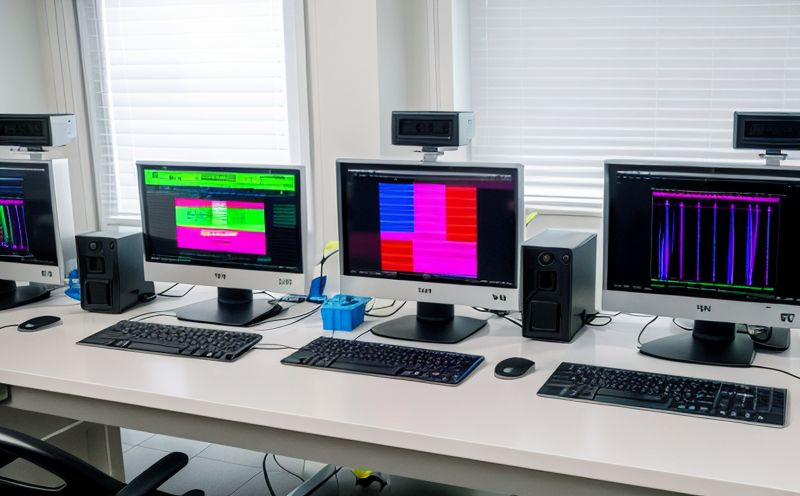ICH Q5A Viral Safety Evaluation for Biopharmaceutical Products
The International Conference on Harmonisation (ICH) guideline Q5A provides a framework for ensuring the safety of biopharmaceutical products from viral contaminants. This evaluation is crucial in the pharmaceutical industry to prevent adverse effects associated with viral transmission. As quality managers, compliance officers, and R&D engineers navigate the complexities of drug development, ICH Q5A serves as a critical reference standard.
The guideline emphasizes the importance of ensuring that biopharmaceutical products are free from known or potentially harmful viruses during all stages of production and distribution. This involves comprehensive testing to identify any viral contaminants through various methods including cell-based assays (CBAs), animal tests, and viral clearance procedures.
ICH Q5A specifically requires manufacturers to demonstrate the absence of adventitious viruses in biologics through a combination of tests designed to detect both enveloped and non-enveloped viruses. The goal is to ensure that any product intended for human use meets stringent safety standards set forth by regulatory bodies such as the FDA, EMA, and WHO.
The testing process typically begins with sample preparation, where raw materials are processed according to ICH guidelines to simulate production conditions. This step ensures that the samples accurately reflect what would be encountered in actual manufacturing processes. Following this, multiple assays are employed:
- Cell-Based Assays (CBAs): These tests use living cells derived from animals or human tissues to detect viruses that can replicate within these cell lines.
- In Vivo Animal Tests: These involve the administration of test materials into laboratory animals to observe any signs of viral infection. This method is particularly useful for detecting non-replicating viruses that may not be detected by CBAs.
The results from these tests are then analyzed using statistical models to determine whether there is a reasonable assurance of safety. Compliance with ICH Q5A ensures that biopharmaceutical products meet the highest standards of quality and safety, thereby protecting public health.
Understanding the nuances of this guideline is essential for pharmaceutical companies looking to comply with international regulations. The thorough nature of these tests underscores their importance in safeguarding patient welfare by minimizing risks associated with viral contamination.
Applied Standards
The ICH Q5A guideline integrates various internationally recognized standards and practices aimed at ensuring the safety of biopharmaceutical products. These include:
- ISO 17025: Laboratory accreditation ensuring that analytical facilities meet quality management system requirements.
- ASTM E2386: Standard practice for the use of cell-based assays in biopharmaceutical testing.
- EN ISO 14155: Good clinical practice for medical devices, applicable to certain biologics.
The integration of these standards ensures that the viral safety evaluation process adheres to best practices and maintains high levels of accuracy and reliability. Compliance with such internationally recognized guidelines builds trust between manufacturers and regulatory bodies.
Scope and Methodology
The scope of ICH Q5A encompasses all aspects related to the viral safety evaluation of biopharmaceutical products, including:
- Detection methods for enveloped viruses like HIV, HBV, HCV.
- Detection methods for non-enveloped viruses such as norovirus and rotavirus.
The methodology involves multiple layers of testing designed to cover different types of viral particles. Cell-based assays are used primarily for detecting viruses that can replicate within cultured cells, while animal tests provide additional assurance by exposing live organisms to the samples being evaluated.
For enveloped viruses, CBAs offer high sensitivity due to their ability to mimic natural infection processes. For non-enveloped viruses, the reliance on animal models helps ensure detection of pathogens resistant to cell culture methods. Together, these approaches provide a comprehensive evaluation process that covers both common and rare viral contaminants.
The methodology also includes procedures for viral clearance studies, which assess whether the manufacturing process itself can effectively remove or inactivate viruses present in raw materials. This ensures that even if some contamination occurs during production, it will be minimized to safe levels before reaching patients.
Why Choose This Test
The ICH Q5A viral safety evaluation is a critical component of any biopharmaceutical development program because:
- Regulatory Compliance: Ensures adherence to international standards set by regulatory authorities.
- Patient Safety: Minimizes the risk of transmitting infectious agents through medications or therapies.
- Reputation Enhancement: Demonstrates a commitment to quality and safety, enhancing brand reputation among consumers and investors.
Beyond compliance and safety, choosing ICH Q5A viral safety evaluation offers several practical advantages:
- Scientific Rigor: Utilizes advanced testing techniques that provide robust data supporting the safety profile of biopharmaceuticals.
- Transparency: Provides clear documentation and reporting, facilitating easier communication with regulatory agencies during review processes.
The comprehensive nature of this evaluation process helps build confidence in the quality and efficacy of new treatments, ultimately leading to better patient outcomes. By incorporating ICH Q5A into your development strategy, you can ensure that your products meet the highest standards of safety and reliability.





